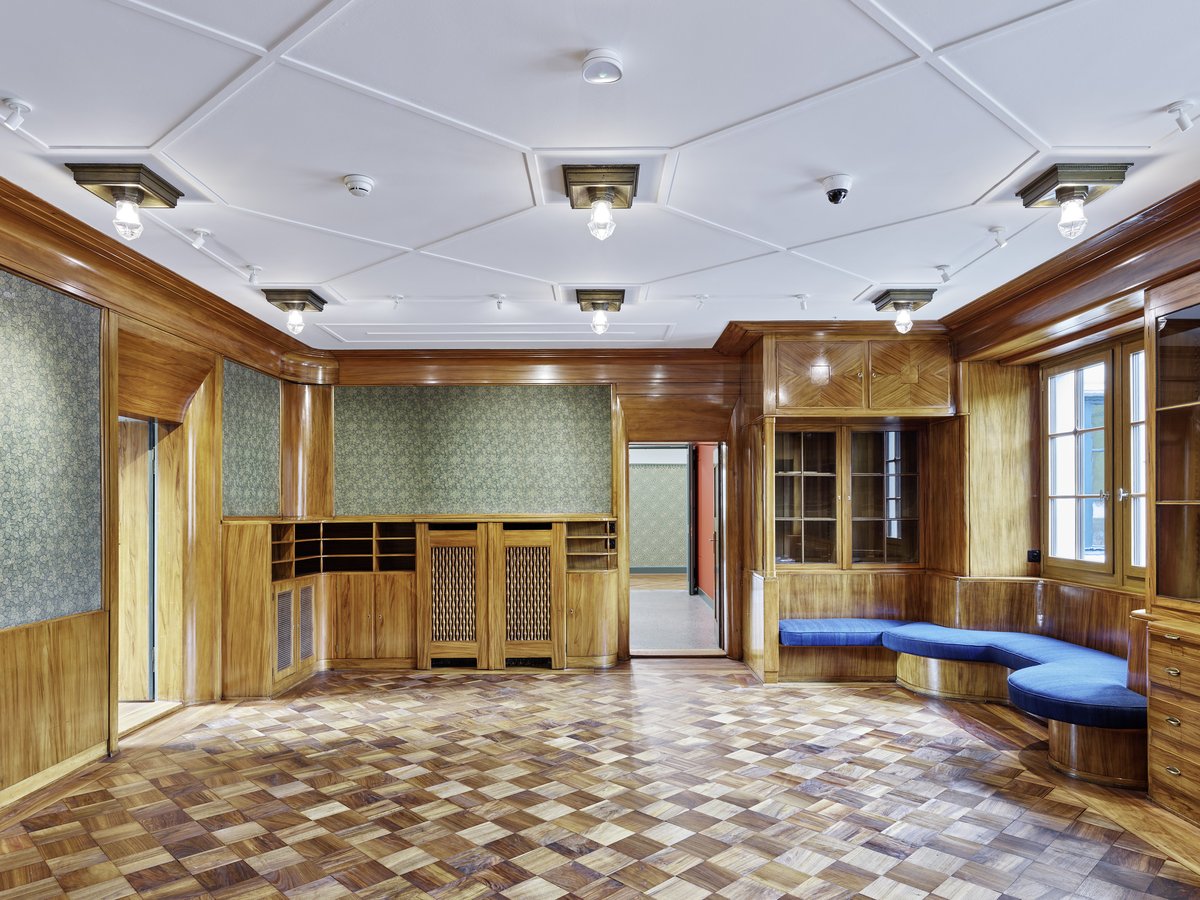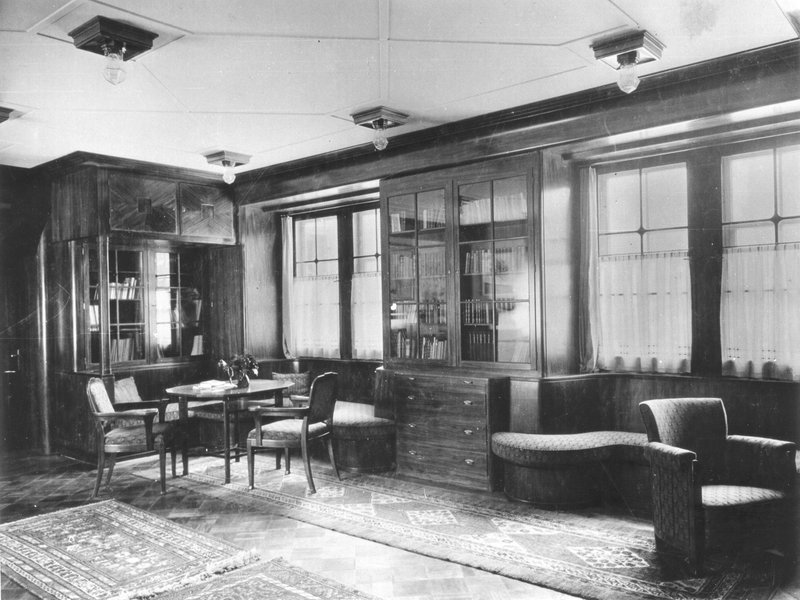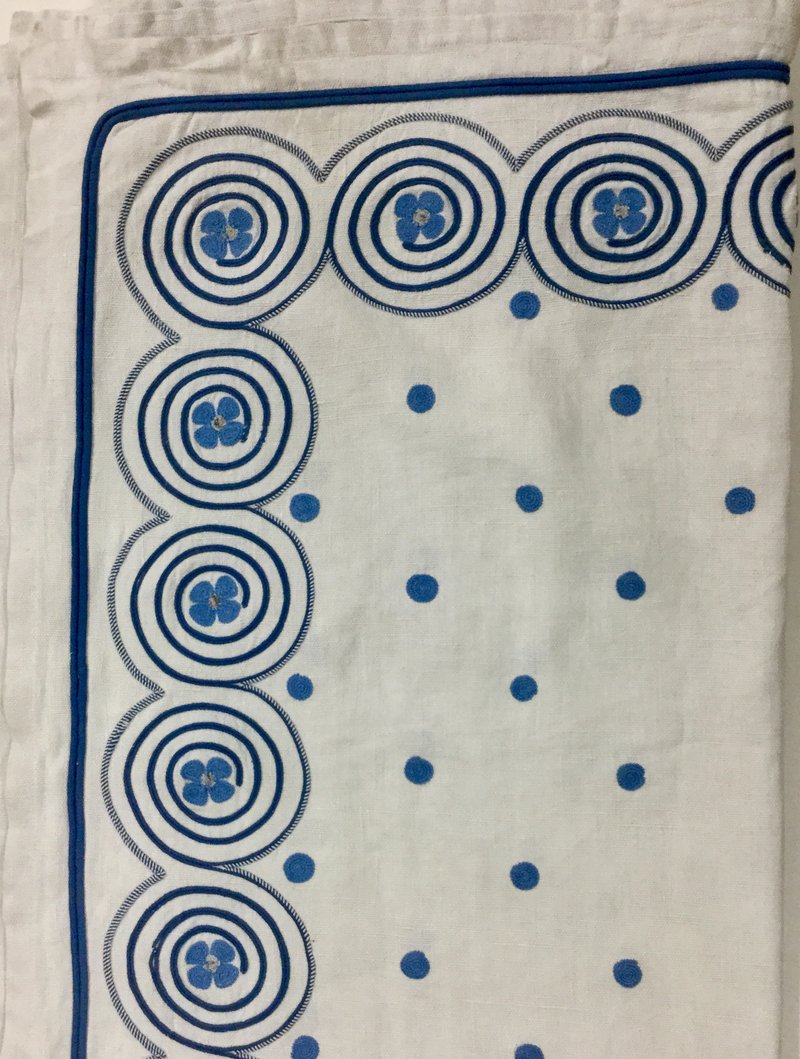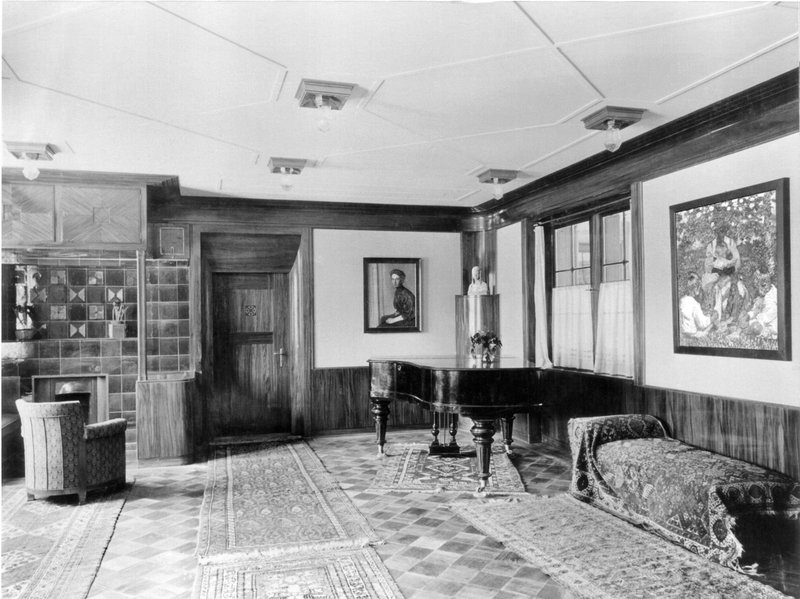Photo gallery
Historical photographs of the salon
The salon is the first centrepiece of the Flora on its way to becoming a house of art.

The freshly renovated salon
Foto: © Georg Aerni
When Hedy and Arthur Hahnloser moved into the Villa Flora, there was only a corridor connecting the main house with the annexe. The eye clinic was set up in the annex, which was run by ophthalmologist Arthur Hahnloser, assisted by Hedy. When the Lindberg Private Clinic opened in Winterthur in 1907, they moved their clinic there and set about redesigning the empty rooms of their home. The centrepiece of the new design was this 'salon', based on plans by Hedy Hahnloser and the architect Robert Rittmeyer.

The salon around 1908
The salon was not just a cozy room, it was a statement. It reflected the most modern tastes and the latest trends in architecture and design. Before the room was installed in the Flora, Rittmeyer showed it at an exhibition in Zurich, the first so-called Interior Art Exhibition in 1908. This presentation is regarded as a pioneer of the Swiss Werkbund and its important series of exhibitions. The Werkbund movement was particularly important for architecture and design in Germany.

Detail of a tablecloth designed by Hedy Hahnloser and crank embroidery
At the time, Hedy Hahnloser – who was not yet an art collector – had a great passion for interior design, which she shared with her cousin Richard Bühler. They enthusiastically explored Henry van de Velde's ideas of renewal and worked on their own designs. They produced numerous decorative arts designs for a wide variety of objects and furniture, patterns and templates, ornaments and details. Together with Rittmeyer, who was a professor at the Technikum in Winterthur, they also created entire interior designs for a wide variety of rooms, from corridors to bedrooms and dining rooms. They designed everything: from the paneling to the lamps, from the furniture to the napkins.
The salon was the first holistically designed room in the new wing of the Villa Flora. It marked the beginning of a new approach to the house, its interior architecture and then also its garden design. In the years that followed, other rooms underwent extensive redesigning.

The salon with the portrait of Hedy Hahnloser by Félix Vallotton, photograph from 1908
It was Hedy Hahnloser's idea that a room also needed pictures to make it complete. The new interiors were therefore hung with colourful paintings by her friends and contemporaries Carl Montag and Carl Rösch, and later also with works by Cuno Amiet, Giovanni Giacometti and Ferdinand Hodler. This is also where her art collection began, which soon moved from Swiss to French modernism.
With the installation of the lounge, the Flora was given a new centre. From then on, the hospitable room became the centre of encounters and the venue for meetings over black coffee every Tuesday. Because the new direction of the Kunstverein and its board was discussed and planned at these meetings, they were later jokingly nicknamed the 'revolutionary coffee'.
Decades later, the Salon was once again to be the birthplace of important changes that were discussed and decided upon here. Many of the discussions between the mayor of the city at the time and representatives of the Flora took place here, which initially led to the founding of a sponsoring society and ultimately to the establishment of a museum.
Historical photographs of the salon